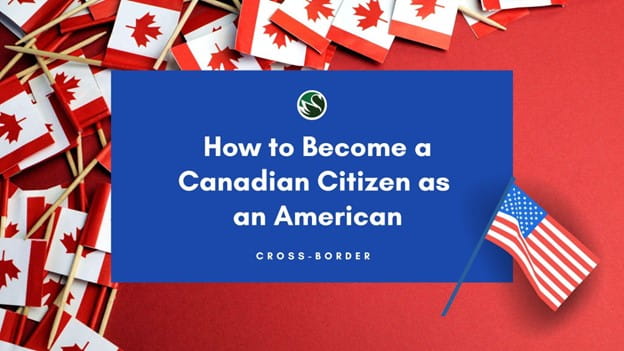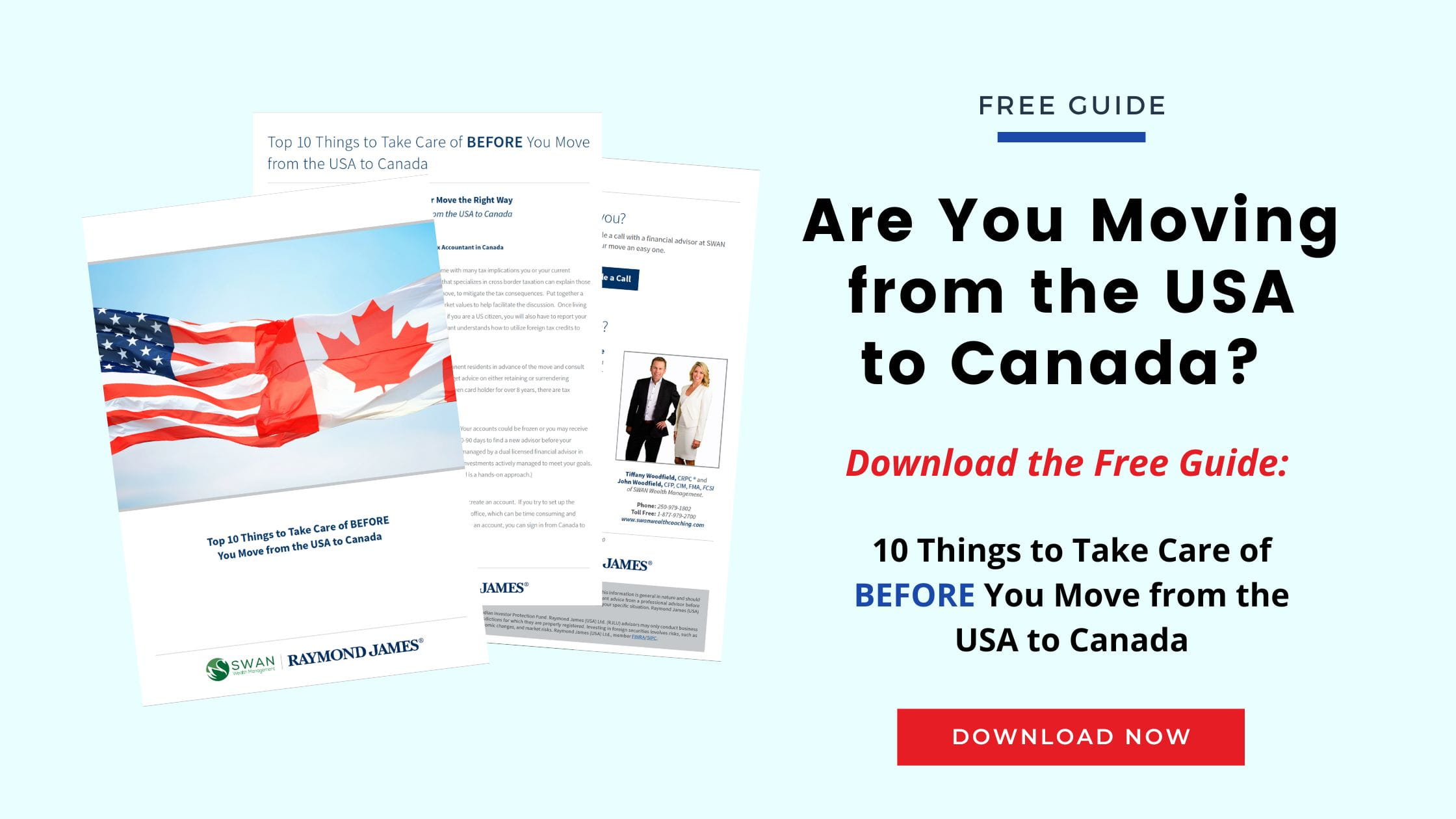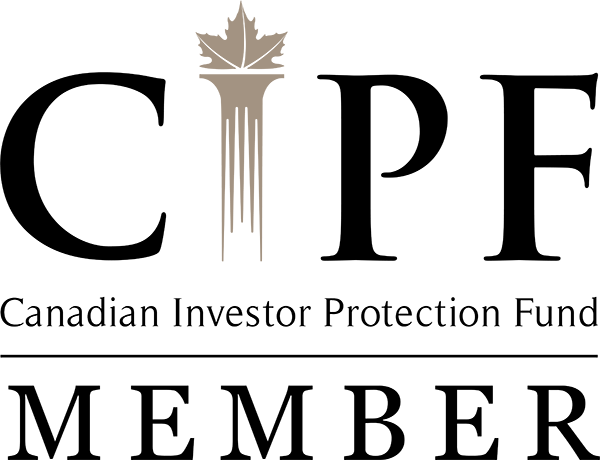How to Become a Canadian Citizen as an American
Written by Tiffany Woodfield, TEP, Associate Portfolio Manager, CRPC®, CIM® and John Woodfield, Portfolio Manager, CFP®, CIM®

Pathway to Canadian Citizenship
Becoming a Canadian citizen as an American follows the normal citizenship path for all immigrants to Canada.
If you're a US citizen with family or business in Canada, or if you've moved back after years away, you might want to make your stay more permanent. To become a Canadian citizen, you usually need to first become a permanent resident.
After that, you’ll need to live in Canada for three out of the last five years, show language skills, and pass a citizenship test. For families with substantial assets, this can be part of a bigger cross-border plan that also includes tax, estate, and investment decisions.
How to Become a Canadian Citizen as an American
There are five main steps to becoming a Canadian citizen.
- Become a permanent resident.This is your starting point. You must hold permanent resident status before applying for citizenship.
- Live in Canada for at least 1,095 days in the past five years.Only days spent physically in Canada count. Time as a visitor or short-term worker usually doesn’t.
- File Canadian taxes for at least three years.If required under Canada’s tax laws, you must show proof of filing.
- Prove language skills.If you’re between 18 and 54, you must show basic English or French ability.
- Pass the citizenship test.This covers Canadian history, values, institutions, and symbols.
Once these steps are completed, you’ll be invited to take the oath and become a Canadian citizen. Each step has details that can impact your larger financial and legal picture, so it’s smart to work with a cross-border advisor.
Canadian Citizenship Basics
Canadian citizenship gives you full rights as a citizen of Canada.
That includes voting, running for office, holding a Canadian passport, and living anywhere in the country without limits. Citizenship is different from permanent residency. Permanent residents can live and work in Canada but must renew their status and keep meeting residency rules. Citizenship, once granted, doesn’t expire. For Americans who plan to keep a long-term connection to Canada, citizenship offers more security. It also allows for dual citizenship, so you don’t have to give up your US status.
Permanent Residence Requirements
You must become a permanent resident before applying for citizenship.
Here’s what that means for US citizens looking to stay in Canada long-term:
- You need a valid PR card.Your status must be active at the time you apply for citizenship.
- You must not be under review for fraud or removal.If there’s any investigation into your status, your application could be delayed or denied.
- You must not be serving a sentence or under a removal order.Legal or criminal issues can affect your eligibility.
- Time in Canada before becoming a permanent resident does not count.Only the time after PR status is granted counts toward your 1,095-day requirement.
For many Americans, PR is often obtained through family sponsorship, business investment, or long-term work in Canada.
Dual Citizenship for the US and Canada
Canada allows dual citizenship, and the US does not force you to give up your citizenship when you gain another.
This means you can hold both passports and enjoy the benefits of living, working, and investing in both countries. For high-net-worth families, this dual status can offer more flexibility, especially when it comes to travel, education options for children, and maintaining strong personal or business ties in both countries. That said, it also creates more tax and estate planning layers. It's important to work with a cross-border advisor to manage these responsibilities wisely.
Application Process and Required Forms
Applying for Canadian citizenship involves a few main steps and forms.
Here’s what you’ll need to do:
- Get your documents ready.This includes your permanent resident card, tax records, travel history, and proof of language skills (if applicable).
- Complete the application form (CIT 0002).This is the main form for adults applying for citizenship. It must be filled out accurately.
- Pay the application fee.The standard fee for adults is $649.75 as of 2025. Payments are made online.
- Submit your application by mail or online.The Canadian government will accept online applications for citizenship if you meet certain requirements. If you do not meet these requirements, then you must apply on paper.
- Wait for your test and interview invitation.If your application is complete, you’ll be invited to write the test and possibly attend an interview.
- Take the oath.Once approved, you’ll attend a ceremony and officially become a Canadian citizen.
Physical Presence in Canada
You must be physically present in Canada for at least 1,095 days before applying.
This rule may sound straightforward, but it often catches many Americans by surprise. Only the days you’re actually in Canada count—vacation days, business trips, or long weekends across the border don’t. Time spent in Canada before you became a permanent resident also doesn’t count.
For families with homes in multiple countries, this requirement takes planning. It also connects closely to tax residency. Spending more than 183 days a year in Canada could trigger tax filing rules. That’s why tracking your days—and working with a cross-border advisor—is key to staying on the right side of both immigration and tax law.
Language Skills Requirements
You must show that you can speak and understand basic English or French.
This applies if you’re between 18 and 54 years old on the day you apply for citizenship. Canada wants to make sure new citizens can take part in community life, understand government services, and engage in daily conversations.
You’ll need to show proof of language skills when you apply. Accepted documents include results from approved language tests, transcripts from secondary or post-secondary education in English or French, or proof of completion of government-funded language training.
Citizenship Ceremony and Oath
This is the final step in becoming a Canadian citizen.
You’ll attend a ceremony and take the Oath of Citizenship, promising to follow Canadian laws and values. It's a formal but friendly event, often held in groups. Once you take the oath, you're officially a Canadian citizen.
Applying for a Canadian Passport
After you receive your citizenship certificate, you can apply for a Canadian passport.
This must be done through Passport Canada. You'll need proof of citizenship, ID, and a passport photo. The passport gives you global travel access and confirms your new status as a full Canadian citizen.
Common Questions
What is the Canadian citizenship application process?
To apply, you must be a permanent resident, meet the physical presence rule, file taxes if required, prove language skills, and pass a citizenship test. Then you submit your application, attend a test or interview, and take the citizenship oath. The process usually takes several months.
When can permanent residents apply for Canadian citizenship?
You can apply once you've been physically in Canada for at least 1,095 days in the past five years. You must also hold permanent resident status, file taxes for at least three years if needed, and meet the age and language rules before submitting your application.
How does marrying a Canadian citizen affect the citizenship process and timeline?
Marriage to a Canadian does not give you automatic citizenship. You still need to become a permanent resident, meet the physical presence requirement, and follow the standard steps. However, your spouse may be able to sponsor you for permanent residence, which starts the process.
What rights do Canadian Permanent Residents have to become a citizen?
Permanent residents can live, work, and study in Canada. They can apply for citizenship once they meet the required residency, tax, and language rules. However, they must maintain their PR status and cannot vote or hold a Canadian passport until they become full citizens.
What rights do Canadian citizens have?
Canadian citizens can vote, run for office, get a Canadian passport, and live anywhere in Canada. They cannot lose their citizenship unless it was obtained fraudulently. Citizens also have full legal status and can sponsor family members to immigrate to Canada.
What is the Canadian Citizenship Act?
The Canadian Citizenship Act is the law that sets out who can become a citizen, what the requirements are, and how citizenship can be gained or lost. It has been updated several times since it first came into force in 1947.
How many Canadian Citizenship Applications are there per year?
Each year, around 200,000 to 250,000 people apply for Canadian citizenship. The number can change depending on immigration levels and government processing capacity. Approval rates are generally high for those who meet all the requirements. (+)
Next Steps
If you’re a Canadian resident or are planning on moving to Canada or the US and need assistance with moving and optimizing your investments, estate planning, wealth management and portfolio management, please get in touch. At SWAN Wealth, we specialize in Canadian financial planning, cross-border financial planning and cross-border wealth management.
Read More
If you’re an American planning on becoming a Canadian citizen, these articles and guides will help.
- Green Card Exit Tax and the 8-Year Rule
- Do Dual Citizens Pay Taxes in Both Countries?
- The Cost of Renouncing Your US Citizenship
- Quick Guide to US Taxes in Canada
About the Authors
Tiffany Woodfield is an Associate Portfolio Manager licensed in Canada and the USA, a Chartered Investment Manager (CIM), a Chartered Retirement Planning Counselor (CRPC), a Trust and Estate Practitioner (TEP) and the co-founder of SWAN Wealth Management, along with her husband, John Woodfield. Tiffany advises clients who live in Canada and the United States and want to simplify their cross-border financial plan, move their assets across the border, and optimize their investments to minimize their tax burden. Together, Tiffany and John Woodfield help their clients simplify their cross-border finances and create long-term revenue streams that will keep their assets safe, whether they live in Canada or the U.S.
John Woodfield is a Financial Management Advisor (FMA), a Chartered Investment Manager (CIM), and a Certified Financial Planner (CFP), and in 2007 was inducted as a fellow of the Canadian Securities Institute (FCSI). As a portfolio manager and CFP®, he works with clients across Canada. John Woodfield’s clients are families, individuals and business owners who understand the importance of comprehensive wealth and investment plans driven by the lifestyle they want to lead.
Schedule a Call
Schedule a 15-minute introductory call with SWAN Wealth Management. Click here to schedule a call.





